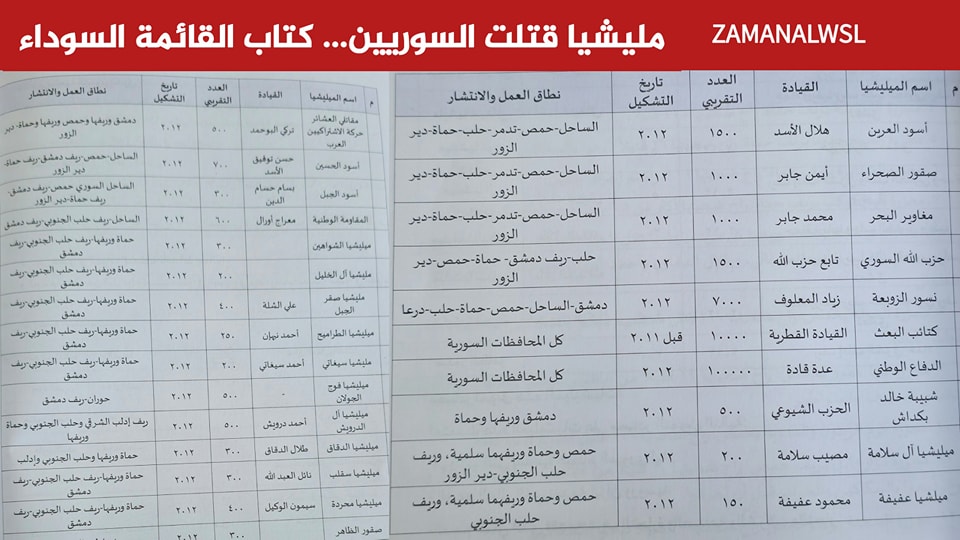A list of dozens of militias established by the former Syrian regime during the years of the revolution to suppress the popular movement and fight alongside it.
Documented by the "Black List Book," it includes the names of the militias, their number of members, their areas of deployment, their leaders, and the date of their formation, with a total estimated at approximately 127,000 fighters.
This documentation shows that the Assad regime relied extensively on militia formations parallel to the official army, distributed throughout various Syrian provinces, particularly in Homs, Hama, Deir ez-Zor, Aleppo, and Damascus. The most prominent of these formations are:
- The Lions of the Den, led by Hilal al-Assad, with approximately 1,500 members.
- The Desert Falcons and Sea Commandos, led by the brothers Ayman and Muhammad Jaber, each with over 1,000 members.
- The Syrian Hezbollah, led by members affiliated with the Lebanese Hezbollah, with an estimated number of 1,500.
- The Eagles of the Whirlwind, led by Ziad Maalouf, affiliated with the Syrian Social Nationalist Party.
- The Baath Brigades, under the direct supervision of the Baath Party Regional Command.
- The National Defense, the largest and most lethal, with an estimated 100,000 fighters.
- The Khaled Bakdash Youth, the militia wing of the Communist Party.
- The Al-Salama Militia and the Afifa Militia, deployed in specific areas such as the southern Aleppo countryside and Hama.

The formation of these militias began as early as 2012, and some of them date back to before 2011, revealing the regime's early intention to build "popular" military arms parallel to the army, more loyal and less accountable.
Systematic Repression and Comprehensive Involvement
These militias' missions varied between protecting checkpoints, launching attacks on areas outside regime control, and committing violations against civilians, including arrests, liquidations, and looting.
Most of these formations were active in areas that witnessed the most violent waves of killing and displacement, particularly on the coast, Homs, Deir ez-Zor, Aleppo, and Damascus.
This list documents one of the largest militarization operations in Syrian society, used by the regime as a tool to maintain its grip on power by absolute force.
The question here remains open: Where did this "army" of 127,000 fighters go? Did the earth open up and swallow them up, or are they lurking in the dark?
















Comments About This Article
Please fill the fields below.